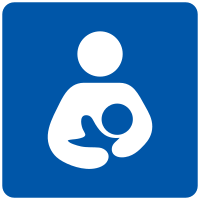
Photo from wikipedia
Background The World Health Organization (WHO) recommends early initiation of breastfeeding within 1 h as it confers many benefits to the child and prevents neonatal mortality. This study aimed to… Click to show full abstract
Background The World Health Organization (WHO) recommends early initiation of breastfeeding within 1 h as it confers many benefits to the child and prevents neonatal mortality. This study aimed to determine the prevalence and factors associated with timely initiation of breastfeeding in the Kilimanjaro region, northern Tanzania. Methods We analyzed secondary data for 866 participants from a population-based cross-sectional study conducted in April 2016 among mothers with children aged less than 5 years in three districts; Rombo, Same, and Moshi Municipal council in Kilimanjaro region, northern Tanzania. A multistage sampling selected study participants and interviewed using a questionnaire. The generalized linear model, with Poisson family and log-link function was used to estimate the prevalence ratios (PR) and 95% confidence intervals (CI) for factors associated with timely initiation of breastfeeding. Results The prevalence of timely initiation of breastfeeding was 71.1%. The vast majority of mothers (90.7%) gave colostrum, and less than a tenth (6.4%) gave pre-lacteal feed to their children. Adjusted for other factors, not giving children prelacteal feeds remained was significantly associated with a higher prevalence of timely initiation of breastfeeding (PR: 2.22, 95%CI 1.38, 3.56, p = 0.001). There was no significant association between other characteristics and the likelihood of timely initiation of breastfeeding in this study. Conclusion The prevalence of timely initiation of breastfeeding in the Kilimanjaro region was higher than the national estimate. The practice of not giving infants prelacteal feeds increased the likelihood of timely initiation of breastfeeding. There is a need to encourage mothers on the significance of recommended ANC visits and early initiation of breastfeeding to their infants to improve the practice.
Journal Title: BMC Pregnancy and Childbirth
Year Published: 2020
Link to full text (if available)
Share on Social Media: Sign Up to like & get
recommendations!